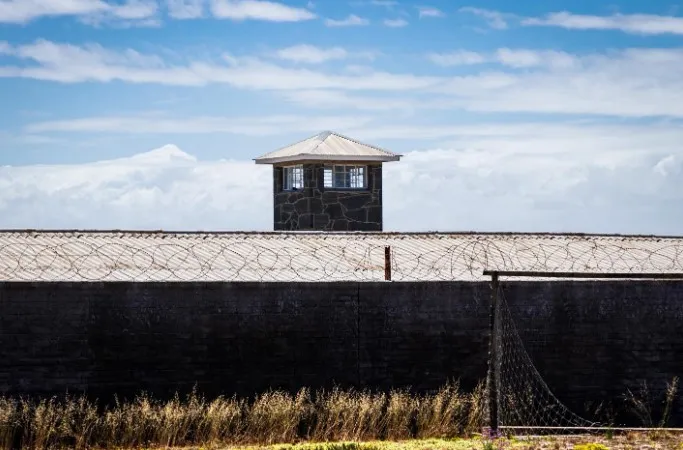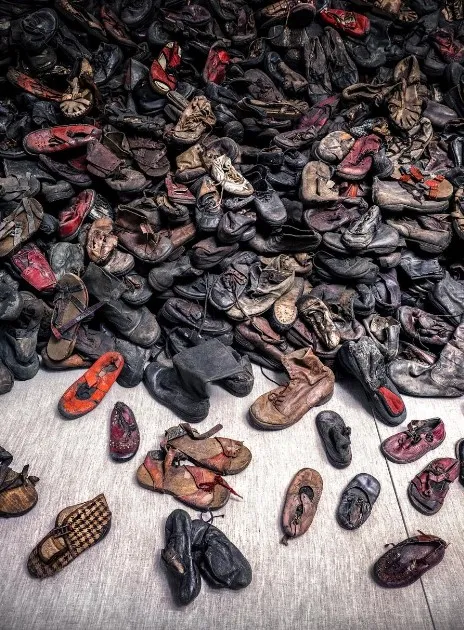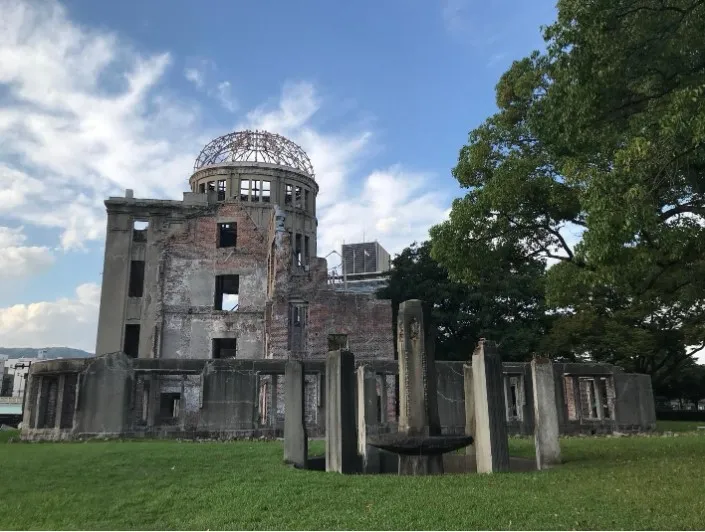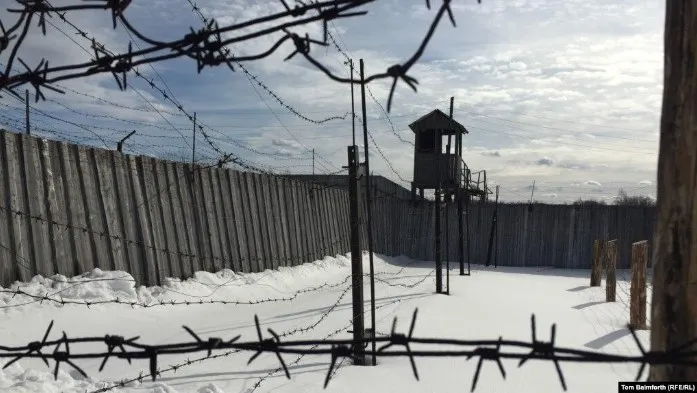
Welcome back, intrepid explorers of the eerie and the somber! Our journey into the world of dark tourism continues with more fascinating and spine-tingling destinations. We’ve delved deeper, adding rich details to each site for an even more engaging experience. Remember, we’re not just touring; we’re learning from the shadows of history. Let’s embark on the first half of our top 20 dark tourism spots with a chuckle and a shiver.
Just in case you missed it, and want to know what Dark Tourism is before you head into the thick of it, I’ve created an article just for you. But if you’re ready to dive right into the top 20 spots, let’s keep going!
Table of Contents
“Chernobyl: Nature’s eerie comeback.” The site of the 1986 nuclear disaster offers a glimpse into a post-apocalyptic world. The ghost town of Pripyat stands frozen in time, a haunting reminder of human error. You’ll see the iconic Ferris wheel, abandoned buildings, and if lucky, some wildlife that’s reclaiming the area.

“Auschwitz: Echoes of the past.” The largest of the Nazi concentration camps, Auschwitz-Birkenau is a somber reminder of the Holocaust. The preserved barracks, gas chambers, and personal artifacts tell a chilling story of survival and loss. It’s a place for reflection and understanding the depths of human cruelty.
“War Remnants: Stark reality of conflict.” This museum offers an unflinching look at the Vietnam War from the Vietnamese perspective. It’s filled with photographs, military vehicles, and artifacts. The graphic nature of the exhibits makes it a profoundly moving experience.

“Atomic Shadows: Tragedy and Hope.” These cities were the sites of the atomic bombings in 1945. Today, they stand as symbols of peace and resilience. Visit the Hiroshima Peace Memorial Park and the Nagasaki Atomic Bomb Museum to understand the devastating impact and the subsequent call for peace.

“Nuclear Echoes: The Polygon’s haunting legacy.” Once a top-secret Soviet nuclear testing site, The Polygon saw over 400 nuclear tests. Today, it’s a stark reminder of the Cold War era and the ongoing impact of nuclear testing on the environment and local populations.
“Rwanda’s Rebirth: From ashes to hope.” The memorials at Murambi, Nyamata, and Kigali tell the harrowing tale of the 1994 genocide. They serve as powerful reminders of the consequences of hatred and the resilience of the human spirit.
The haunting silence of genocide camps, from Rwanda’s Nyamata Church to the Srebrenica Memorial in Bosnia, echoes the urgent plea to remember and learn. These somber sites serve as stark reminders of humanity’s potential for both cruelty and compassion.
“Ground Zero: Resilience in the face of tragedy.” This memorial and museum commemorate the September 11, 2001, terrorist attacks. The site offers a poignant tribute to the victims and a look at the events of that day and their aftermath.
Stroll through the world’s creepiest cemeteries, from the Père Lachaise in Paris to New Orleans’ Lafayette Cemetery. Each grave and mausoleum tells a story, and the eerie ambiance might just convince you that ghosts do indeed walk among us.
“Cambodia’s Dark Chapters: The Khmer Rouge’s legacy.” Once a high school, Tuol Sleng was converted into a notorious prison by the Khmer Rouge. Choeung Ek, one of the many killing fields, is where thousands were executed. Both sites are sobering reminders of the brutal regime.
“Berlin: Layers of dark history.” From the remnants of the Berlin Wall to the Holocaust Memorial, Berlin is a city that wears its history on its sleeve. It offers a unique window into the events of World War II and the Cold War.
Delve into the legend at Castle Frankenstein in Germany, where the tale of Mary Shelley’s creation takes on a life of its own. It’s not just a story; it’s an immersive historical experience that chills to the bone.This former German military base is said to be haunted by the soldiers who once lived – and died – here. Visitors report ghostly encounters and unexplained phenomena, making it a must-visit for anyone interested in the paranormal.

“Titanic’s Resting Place: Deep-sea storytelling.” The wreck of the RMS Titanic lies on the ocean floor, a tragic testament to human ambition and nature’s might. Visiting the site is an exclusive and profound experience, revealing stories of the passengers and the ship’s fateful journey.
When embarking on a journey through the world’s darker historical chapters, it’s crucial to approach with a mindset of respect and sensitivity. These tips will help you navigate these somber sites while ensuring an enriching and authentic experience.
1. Research Before You Go
Before visiting any dark tourism site, it’s essential to understand its history and significance. This enriches your visit and fosters a deeper appreciation and respect for the experiences of those connected to the place.
2. Respect Local Customs and Norms
Many dark tourism sites are closely tied to the communities affected by the tragedies they commemorate. Be mindful of local customs, dress codes, and photography restrictions to show your respect.
3. Engage with Local Guides
Local guides can offer invaluable perspectives that you won’t find in guidebooks. Their personal stories add a human dimension to the facts and figures of history.
4. Reflect and Debrief
Take time after your visit to reflect on the experience. Discussing what you’ve seen and felt with fellow travelers or locals can be cathartic and deepen your understanding of the site’s impact.
5. Support Local Communities
Consider how your visit can benefit the local community. This could be patronizing local businesses, donating to relevant causes, or contributing to preservation efforts.
6. Manage Your Expectations
Dark tourism sites can elicit strong emotions. Be prepared for a range of reactions from yourself and fellow visitors. It’s okay to be moved, upset, or even feel relief or closure.
7. Leave No Trace
Preserve the integrity of the sites you visit. This means no littering, no taking of “souvenirs” from the site, and leaving everything as you found it.
8. Share with Sensitivity
When sharing your experience on social media, be thoughtful about the language and images you use. Avoid sensationalizing or trivializing the history and experiences associated with the site.
9. Use the Experience for Growth
Allow the visit to inform your worldview. Dark tourism can be a powerful tool for personal growth, encouraging a more compassionate and thoughtful approach to different cultures and histories.
10. Travel Sustainably
Consider the environmental impact of your travels. Choose sustainable travel options where possible and be conscious of your carbon footprint.
Dark tourism has seen a surge in popularity, and understanding why can enhance the experience. It often fulfills a desire to connect with history personally, to witness the places where pivotal events unfolded. For others, it’s about facing the reality of mortality and finding a new appreciation for life. There’s also an element of education, with visitors seeking to learn from the past to inform the future.
In an age where much of life is experienced virtually, there’s a growing desire for authentic experiences. Dark tourism offers this authenticity, providing tangible connections to history’s actual physical remnants. This authenticity drives many to seek out the original locations of historical events rather than experiencing them second-hand through movies or books.
While dark tourism often focuses on past tragedies, it’s crucial to balance this with the stories of resilience and recovery that emerge from these sites. Many places that once witnessed great sorrow have become symbols of hope and change, teaching visitors not only about the capacity for human cruelty but also for compassion and redemption.
As dark tourists, we play a role in preserving these sites. By visiting, we contribute to the maintenance and conservation of these places, ensuring that their stories are kept to time. This responsibility comes with the privilege of being able to walk through history in such a direct way.
11. Montserrat (Soufriere Hills Volcano), Caribbean
“Montserrat: Nature’s Wrath Unleashed.” The eruption of the Soufriere Hills Volcano in the 1990s led to the creation of a modern-day Pompeii in the Caribbean. The buried town of Plymouth, now eerily frozen in time, offers a fascinating yet somber look at the power of nature.

12. Kim Mausoleum, North Korea
“Dictatorship Preserved.” The Kim mausoleum, resting place of North Korea’s leaders, is a surreal experience. It’s a journey into the heart of one of the world’s most secretive regimes, offering a glimpse into the cult of personality surrounding its leaders.
13. Ijen Volcano, Indonesia
“Blue Flames and Toxic Fumes.” Ijen Volcano is famous for its stunning blue flames, a result of sulfur combustion. The site also highlights the harsh realities faced by sulfur miners working under extreme conditions, offering a stark contrast between natural beauty and human struggle.
14. Darvaza Gas Crater, Turkmenistan
“Gateway to Hell.” This flaming gas crater, created by accident in the 1970s, has been burning ever since. Its fiery glow against the night sky is a mesmerizing, yet eerie spectacle, symbolizing the unexpected consequences of human interference with nature.
15. Robben Island, South Africa
“Island of Captivity.” Known primarily for housing Nelson Mandela during apartheid, Robben Island is a symbol of the struggle for freedom and human rights. The guided tours, often led by former prisoners, provide a poignant insight into South Africa’s tumultuous past.
Venture into Africa’s heart of darkness, where the continent’s complex history manifests in evocative sites. From the slave forts of Ghana to the Apartheid Museum in South Africa, dark tourism in Africa offers a journey through time, spotlighting the resilience and struggle of its people.

16. The Aral Sea, Kazakhstan/Uzbekistan
“A Sea No More.” Once one of the world’s largest lakes, the Aral Sea has dramatically shrunk due to water diversion projects. The rusting ships stranded on the former seabed are a haunting reminder of one of the planet’s most catastrophic environmental disasters.
17. Perm-36 Gulag, Russia
“Echoes of the Gulag.” This former labor camp offers a rare look into the Soviet Union’s repressive system. The preserved structures and personal stories of inmates offer a chilling glimpse into a not-so-distant past.

18. Titan Missile Museum, Arizona, USA
“Cold War Relic.” This preserved Titan II missile site offers an intriguing look into the nuclear tensions of the Cold War. Visitors can explore the control room, see the massive missile, and get a sense of the apocalyptic fears that once gripped the world. The US has no shortage of haunted houses, each with its own ghastly tales. The Winchester Mystery House’s endless maze of rooms was built to confuse spirits. The Villisca Axe Murder House in Iowa remains a frozen scene of a gruesome, unsolved crime. These homes aren’t just buildings; they’re keepers of stories.
19. Majdanek, Poland
“Footsteps of the Holocaust.” As one of the most well-preserved Nazi concentration camps, Majdanek serves as a direct and powerful reminder of the horrors of the Holocaust. The site’s authenticity and the remnants of its gas chambers make it an essential visit for understanding this dark chapter of history.

20. The Falkland Islands, Atlantic
“War in a Windswept Landscape.” Known for the 1982 Falklands War, these remote islands offer a unique blend of British and Argentinian military history amid rugged natural beauty. The battlefields, memorials, and museums provide insight into this lesser-known conflict.
Some islands are infamous not for their beaches, but for their dark histories. Take Poveglia in Italy, a quarantine station turned asylum, reputed to be one of the most haunted places on earth. These creepiest islands offer isolation, history, and plenty of chills.
“Dark tourism is more than just a journey to the dark side; it’s a deep dive into history, tragedy, and the resilience of humanity.” – Dr. Eerie Explorer, Dark Tourism SpecialistWhat draws us to these places of tragedy and terror? Dark tourism examines the spaces where humanity’s worst moments are preserved and asks us to reflect on our capacity for cruelty and our resilience. Its growing popularity signals our collective desire to confront the past and understand our nature.
I’ve now given you but a taste of 20 of the best dark tourist sites that are out there; here are a few others that may float your boat.
There you have it, a slightly twisted yet educational guide to the world’s top dark tourism destinations. Remember, dark tourism isn’t just about the chills; it’s about understanding our past and appreciating the present. So, pack your bags, but don’t forget your moral compass at home, and never forget to Travel Till You Drop!


Hi, Jill Here
Hi! I’m Jill, a Dallas, Texas girl traveling the world. After a career in the Air Force and touring over 50 countries later, my need to explore keeps going! It’s time to rock & roll and find all those places I never knew I was missing.
Table of Contents
Join me to get exclusive travel tips, giveaways and more!
Gallery
Copyright © 2023 | All Right Reserved